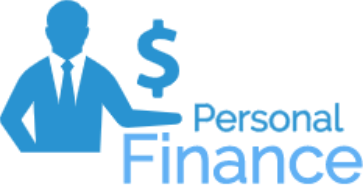
As Senior Vice President of Investments at Fundrise, I’ve seen successful investors come in all (financial) shapes and (bank account) sizes.
There is, however, one thing that almost every accomplished investor has in common: they don’t achieve their financial goals accidentally. Investment success is usually the product of clear intentions, and the best investors make plans deliberately, employing strategies with distinct goals and timelines.
In this article, I’m very happy to report that being effectively mindful about your investments doesn’t need to be difficult or time-consuming. It can start by establishing a few basic investment behaviors, like the ones I’ve shared throughout this piece. And even more importantly, building long-term financial success through an investment portfolio is a realistic goal for almost everyone. Thanks to many of the modern market’s investment options, smart investing can be painless, affordable, and accessible to all.
As with many other important life goals — say, physical fitness, good health, positive personal relationships — the foundation of success in investing can begin with, or be enhanced by, the establishment of a few helpful habits. Each of the items below has the potential to assist you in continuing to develop of your investment portfolio, manage your accounts, and, yes, potentially earn better returns.
Keep in mind, however, that none of the opinions in this piece are intended as individual advice, and I encourage any readers to consult their financial or investment advisors before making investment decisions.
Pay regular attention to your time horizons
This first habit is simple: Set aside some time on a regular basis to evaluate, and potentially adjust, your time horizons.
When we refer to a “time horizon,” we’re talking about the general date range when an investor anticipates (or, in many cases, needs) an investment to conclude, to fulfill its stated financial targets and become fully liquid. After all, the full value of money is contextual: it can only truly do its job if you have access to it when you need it.
Investors who have a clear sense of their time horizons have the opportunity to make smart decisions about other elements of their investing plan. For instance, clearly knowing your timeline and constraints can help you determine your risk tolerance. (I.e. the shorter your horizon, the less risk you want to shoulder.)
And it even helps you know what specific investments are viable options for your portfolio. For example, if your financial goals are longer-term, you can afford to invest in lower liquidity options that have the potential to deliver higher or more consistent returns. Many of Fundrise’s investors turn to private market real estate for exactly that reason.
Protip: On Fundrise’s blog, we have an in-depth article that walks you through specific steps you can take to determine your personal time horizon.
Look for opportunities to expand portfolio diversification
Another practice I believe in is always being on the lookout for opportunities to add new types of investments to your overall strategy, in a way that meaningfully enhances your diversification.
As I’m sure every reader knows, establishing diversification is one of the oldest and most oft-repeated koans of investment wisdom. The majority of people understand the basic gist: Don’t put all your eggs in one basket. What the old advice gets wrong, however, is the suggestion that portfolio diversification is binary — the idea that your portfolio either is diversified or is not. But it’s not that black and white: some portfolios are better diversified than others. For decades, investors have been fed the belief that a portfolio constructed with a basic balance of public stocks and bonds could offer adequate diversification. As long as you met that balance, the conventional knowledge said, you could check that box as complete.
That’s simply not how portfolio diversification works, at least not anymore. Instead, diversification has depth and degrees. As technology and regulatory changes open up new investment options — like Fundrise’s private market real estate — to more investors than ever before, there are additional classes of investments available, beyond the public market. These can deepen a portfolio’s diversification, by lowering the overall correlation between assets it contains, ultimately increasing that portfolio’s expected performance.
In particular, investing in private market opportunities can represent a major step forward in a portfolio’s diversification. Private assets hold unique potential for more consistent returns. Major investors like the Yale Endowment have demonstrated and popularized the idea that inefficiencies in alternatives and private market investments can lead to opportunities for stronger risk-adjusted returns, whereas those opportunities simply don’t exist in the highly efficient public counterparts., Fortunately, private market investments — like private market real estate — are now available to more investors than ever before.
Aiming to expand diversification is a crucial tactic for breaking out of old, outmoded investment mindsets. This doesn’t need to be an urgent or stress-inducing habit, but I’ve spoken to investors who make a point of taking a few minutes once or twice a year to research what new investment options have become available to individual investors, especially in private markets. With today’s technology, those options continue to expand at an exciting pace.
Establish new investment-based income streams
As I wrote for Mint previously,
“A five-year study by Tom Corley, the author of “Rich Habits,” found that on average, 65% of self-made millionaires had three income streams. As demonstrated in this study, by diversifying income streams, individuals could benefit from greater income and increased financial independence: the less reliant you are on a single source of income, the greater control and flexibility you have with your finances.”
So, in short, having a secondary or even tertiary income stream can be a powerful enhancement to your financial life, both short-term, as you pocket the income, and long-term, as the added monetary agility gives you the chance to lay strong foundations.
Of course, very few people have the time (or the desire, or the energy) to earn a second income by working a second job. Not a problem: With the right kind of investment, you can establish a new income stream — often in the form of dividends — requiring only minimal additional work from you.
Investors who are interested in embracing a new income stream do so by exploring investment options that can help them get there. Similar to how one can perform periodic research on new diversification opportunities, some investors also make a point of browsing investments that help them generate new passive income streams.
Again, expanding your portfolio to include these new possibilities doesn’t need to feel like an urgent task, but as new investment products make it easier than ever before to earn passive income, it becomes simpler and simpler to incorporate pursuit of these possibilities into your overall financial self-care.
Contribute regularly to your existing investments
Of all the habits on this list, this one is probably the easiest to do. Why? As tech platforms become ever more ubiquitous in the financial world, more and more investment products include the option to set up repeated investment contributions as part of an automated process.
If you’ve built your portfolio well, your investments’ overall trends should be toward long-term positive returns, regardless of any short-term rocky periods, which should be occasionally expected. That means it’s often in an investor’s best interest to continue making contributions to their account on a regular basis, no matter what.
As Vanguard says, “No matter what your goal is for the money you invest, you can get there faster by continuing to add to your portfolio on a regular basis.”
Whether or not you use an investment platform that offers an automated contribution option, you can make a point of budgeting some amount to add to your portfolio on a regular basis, often monthly, and always according to your overall diversification strategy.
Monitor whether or not you’re on track toward your goals
You can only manage what you can measure, and in the big picture of managing your investments, that means measuring your trajectory toward accomplishing your financial goals — then making adjustments if anything looks off.
Similar to automating repeated contributions, monitoring an investment’s progress toward a goal has become easier as more and more investment platforms have embraced tech solutions, offering user-friendly, data-rich interfaces. Sleek products like Schwab’s Intelligent Portfolios and many of Fundrise’s account options offer investors simple-to-use tools that let them set, track, and analyze their investment goals, even if they have little-to-no prior investment planning experience.
From there, these platforms will regularly take into consideration the investor’s contributions to date, and the growth of the capital so far, to determine whether it’s likely that the investor will meet their financial target along their specified timeline.
In any case, if you care enough about your financial future to set a specific goal, you’re doing yourself a disservice not to track its progress with the best tools available. Make a habit of watching how your money behaves — and reacting calmly, according to your overall plan. That brings us to the final habit…
Sometimes, do… nothing?
One of the biggest mistakes investors can make is taking actions when it would be better to be patient and do nothing instead. The impulse to sell an investment when the market is doing poorly, or buy an investment when the market’s doing well, goes against the most fundamental tenet of investing success: buy low and sell high.
However, as costly as those errors can be, the impulses to make them are admittedly understandable. The fundamental mechanics of human psychology that cause investors to make those mistakes are inborn in virtually all of us; in order to break away from those inclinations, investors need to make a habit of examining their gut feelings objectively, practice patience, and, in many cases, opt to do nothing when faced with a tough decision.
This is especially true when considered alongside the other behaviors already listed in this article, for investors who have developed a sound, sturdy investing plan. If you have faith in your portfolio — one that you’ve constructed with your time horizons, diversification, income streams, and regular contribution schedule in mind — there’s a good chance that holding course will lead to better results than tinkering with your plan every time it faces a challenge.
So, when in doubt, consider doing nothing, and eventually you might discover just how profitable doing “nothing” can be.
Need to get started with investments of your own?
Of course, developing a set of healthy, powerful investing habits is only helpful if you have an investment portfolio that you can apply them to. In today’s investing environment, there’s a myriad of ways to get started in the public market, with a broad portfolio of classic public assets like stocks and bonds. At Fundrise, we help investors take their portfolios to the next level of diversification and long-term potential, by offering direct access to private market real estate. We’ve made real estate investing accessible, affordable, and easy. If you’re interested in getting started, you can see our available account options here, and you can always read more about our platform and investment options at www.fundrise.com.


